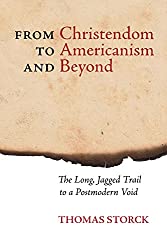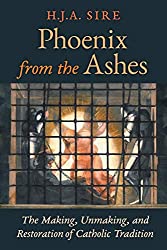
This prodigious volume from H.J.A. Sire feels like an occasion of serendipity, even providence, in my life. I felt immediately drawn to the book when it was published last year, but, amidst constraints of time, budget and whatnot, delayed purchasing. Then, most kindly, a copy was given to me.
Now, I have been given numerous books over the course of my life, but few will ever mean as much to me as the gift of this book has. Honestly, I think it has changed my life.
Let me explain. The book covers well-worn territory for me. It concerns the deep malaise – in truth, grave sickness – that has openly afflicted the Church since the 1960s.
Rather, to be exact, that is the theme of Part II, which constitutes the main, longer part of two in the book. And this main part details not only the malady of the contemporary Church, but also a nuanced discussion of the hopes for healing it. (The earlier, shorter Part I provides a rich, historical survey of former maladies in the Church, which sets the stage for what follows.)
But my point is that much of this is long-familiar territory for me. I have suffered the crisis of the Church now for many years. I have also long surveyed the literature from numerous Catholic traditionalists – people like Romano Amerio, Michael Davies or Charles A. Coulombe – for years now. How much could Sire tell me that was new? At least, that would matter much?
Well, my testimony above to a small, but nonetheless significant, life-change should answer that question.
But perhaps it is a matter here less of what Sire says, than of how well he says it.
For there are certain Catholic traditionalists, who – in the midst of their very real suffering – can become almost hysterical in their outrage at what happened in the 60s and 70s and what appears to be happening again today …
There is nothing hysterical about Sire. His book bears all the hallmarks of a man in his mature years, who has steadily, soberly contemplated the sickness of the modern Church.
He appears, moreover, as a man who has avoided not only the Scylla of hysteria but also the Charybdis of happy denial that anything is seriously wrong.
No, Sire appears to me like a doctor: grimly, calmly staring down a very serious malady—without evasion, without false hope—and praying, pondering, researching for the whole of his adult life as to what needs to be done.
Amidst this, he has also long considered the work of other figures attempting to address the crisis. Thus, the book features his nuanced reflection on people as diverse as Benedict XVI, Marcel Lefebvre and St. Josemaría Escrivá. More: the book considers both their successes and failures and lays out tightly-reasoned arguments as to what is necessary to restore health to the Church.
No book, of course, is without its faults. Sometimes – not often, but sometimes – I found the author’s tone too scathing. I also think he misses something of the great personal holiness of St. John Paul II whose greatest contributions to Church and world history (e.g. the battle against Communism) lie outside this book’s main concerns. (And further things might be mentioned, except that I am still chewing them over, as Sire, to his credit, has provoked me to do.)
But these defects (if defects they are) are minor, compared to the sheer amount on offer here. This work reveals colossal erudition, combined with an unrelenting hunt for the truth.
The result is an existential diagnosis of the contemporary ecclesiastical sickness that profoundly convinces. And speaking for myself, I emerge from it encouraged to the same seriousness of purpose that Sire has.
In other words, the book provides a bracing dose of both grim reality and genuine wisdom. As such, it calls me to be more real and less frivolous: Time to roll up one’s sleeves and work.
For I have been to countless zany masses in my life. I have long read of the grotesque antics of Küng, Schillebeckx, Rahner, Bugnini and all the rest – covered in these pages in merciless detail. And I have witnessed the way the Catholic Church ever more resembles the false, happy New Age-ism of my misspent youth.
But Sire challenges me to be serious. Above, I described the book as a providential gift, whilst I hesitated buying. If you care about the Church, I urge you, reader, not to delay like I did, but to really study Sire.
Not only will I be doing that for many years to come, I will venture further than that. I think I will be joined by many more in the generations to come. Indeed, I suspect this book will still be cherished a century or more from now by people wishing to understand what went wrong with the Church.
Perhaps it will even be carefully studied by future pontiffs wishing to understand how to heal Her. (Yes, there are things in Sire’s book that are that good!)
In short: I cannot recommend this book highly enough. What Sire is saying – with tremendous scholarship, reason and gravitas – calls out not simply to be read but profoundly contemplated.
Foreword for Monarchy by Roger Buck

Buying Books at Amazon Through These Links Gives Us a Commission. This Supports Our Apostolate. Thank You if You Can Help Us Like This!













Comments
comments are currently closed
One response to “Phoenix from the Ashes: by H.J.A. Sire (Review)”
[…] « Feast of St. Catherine of Siena Phoenix from the Ashes: The Making, Unmaking, and Restoration of Catholic Tradition by H.J.A. Sire (… […]